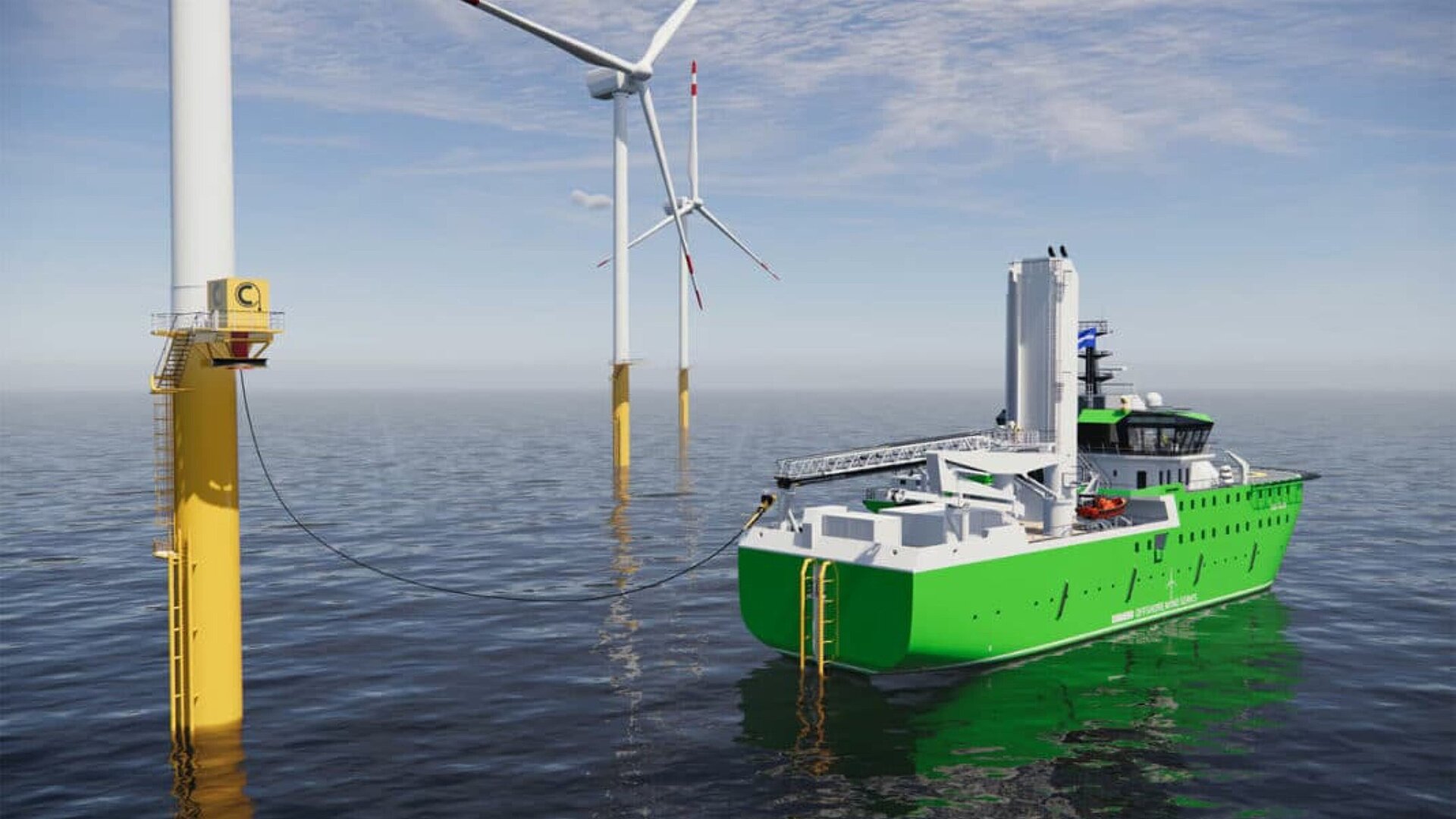Damen unveils all-electric SOV design

The new SOV 7017 E will have an offshore charging system (Source: Damen)
Damen has released details of a fully electric service operation vessel (SOV), SOV 70017 E, capable of operating on electric power by charging batteries at offshore wind farms.
The 70m-long by 17m-wide vessel, with full redundancy from a conventional diesel installation, uses the motion-compensated gangway, controlled from the wheelhouse, to charge batteries at sea from a turbine or substation offshore.
Damen worked with UK-based MJR Power & Automation on the offshore charging module. MJR has previously established an offshore charging system for a crew transfer vessel and has now developed a 4-MW charger connector for the 70m vessel. It is also working on a larger 8-MW unit that will be capable of charging larger vessels of up to 90m.
Charging is undertaken when the vessel is in low power, so-called ‘green’ DP mode, requiring less energy than the hotel load. A full charge typically requires energy produced in just a few hours by a single turbine.
Designed to internationally recognised safety standards, including IEC/IEEE 80005-1, the electrical system will soon receive Approval in Principle from DNV and is designed in accordance with forthcoming offshore charging standards under collaborative development by DNV UK and Norway.
To establish the business case for the extra capital investment that would be necessary, Damen undertook a detailed investment appraisal. This took into account a range of parameters, including the cost of chargers and batteries, battery replacement requirements, energy cost scenarios, the price of CO2, different operating profiles, and charge times.
Many different scenarios were analysed, Damen said, but all had in common a healthy return on investment ranging between five and 15 years, depending on the assumptions made.
Damen product manager Service Operations Vessels, Mark Couwenberg, said: “The product launch of the SOV 7017 E demonstrates that the technology is there to make offshore operations fully electric. The reduction in OPEX implied by harvesting energy directly from the offshore wind farm implies a business case for this model.
“We cannot do this alone, however. To make this a reality will require collaboration throughout the chain, with shipbuilders, vessel operators and wind farm developers working together in pursuit of mutual benefit. We’re looking forward to participating in such cooperations as we take this concept forward. Together, we can make our offshore energy production more sustainable.”
